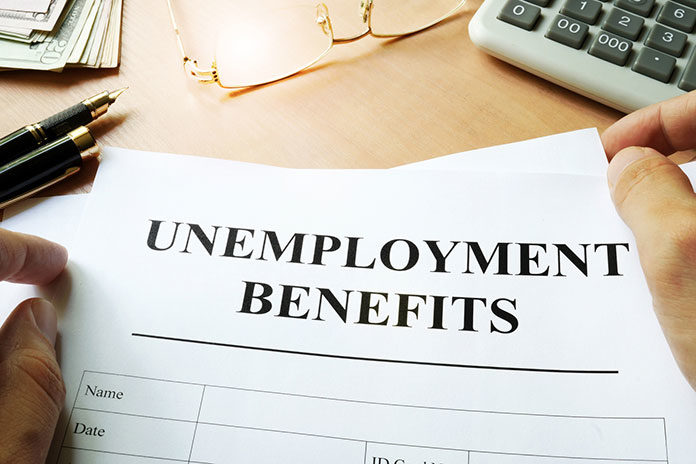
The coronavirus pandemic has wreaked havoc on the U.S. economy, driving millions into unemployment. Getting laid off can be a blow in the best of times, but if it’s just happened to you, you’re probably reeling. Here are some important steps to take if you’ve lost your job.
1. Apply for unemployment benefits
As long as you weren’t fired for cause and earned enough money to meet your state’s minimum requirements, you should be eligible for unemployment benefits. You’ll be able to claim immediately unless you live in a state where severance pay delays benefits. Be sure to file as soon as possible, since it may take a while to process your claim. And if you have trouble getting through online or by phone, be persistent – a lot of people are filing for unemployment right now and systems are overloaded. But don’t give up on submitting that claim.
2. See if you’re due any severance or accrued time off
If you have accrued time off from your employer that you never took, you may be able to get compensated for that time. Similarly, you may be entitled to a severance package from your employer upon termination. If you’re laid off, find out what payouts you’re entitled to. You should also be prepared to report those payouts when you submit your unemployment claim.
3. Assess your savings
Once your claim is approved, your local unemployment authority will tell you what your weekly benefit will look like. That benefit is unlikely to replace your former paycheck in full.
You’ll need to assess your savings and see how close you can get to your former income. Say you used to bring home $800 a week, and you’ll now get $600 on unemployment. If you have $3,000 in an emergency fund, you’d be able to supplement that extra $200 a week from your savings for 15 weeks. It’s important to understand that and plan accordingly so that you won’t run out of money. A smarter bet might be to try to cut down on expenses so you can avoid withdrawing that extra $200 a week unless it’s a true emergency.
4. Reach out and ask for relief
You may get more leeway with your bills if you can prove that you’re unemployed. Before you dig into your savings, talk to your landlord about deferring some rent payments, or look at putting your mortgage into forbearance. Similarly, if you owe money on a credit card, see if your issuer will work with you. You can also ask your utility company, internet provider, and other loan servicers for assistance. Do a rundown of your bills and ask for more flexible payment terms on all of them.
5. Figure out if you’ll need to borrow money – and how to do so affordably
Maybe you don’t have money in savings, can only get so much bill-pay relief, and your unemployment benefits don’t cover your living expenses. If that’s the case, you may need to borrow some money to get through the next few months. And if you’re going to borrow, you’ll want to do so in as affordable a manner as possible.
Here are what your best options look like, from most to least ideal:
- Home equity loan or line of credit: This option is only available to homeowners as you’ll be borrowing against the equity in your home. As such, it generally gives a reasonable interest rate.
- Personal loan or coronavirus hardship loan: Personal loans let you borrow money for any purpose and are cheaper, interest rate-wise, than credit cards. If you can prove that you’ve lost income during the pandemic, you might qualify for a coronavirus hardship loan with especially low rates. These are comparable to, or even better than, what you’d pay if you borrowed against your home, although a hardship loan may be capped at a much smaller loan amount.
- 401(k) loan: Borrowing against your own retirement savings is affordable in that you’re essentially borrowing from yourself. But if you fail to repay that loan on time, you could face extremely costly penalties and potentially cause problems for your old age.
- Credit card with 0% introductory offer: If you can’t borrow via one of the above options, a credit card with a 0% introductory APR may be your next best bet. But be careful, because your interest rate could skyrocket once that intro period expires, and if your balance isn’t paid off by then, you could end up in a pretty deep hole.
- Regular credit card: If you don’t qualify for a credit card with a 0% introductory APR, you may have no choice but to rack up a balance on a standard credit card where interest will accrue on your purchases immediately. This is really your worst-case scenario, so explore all of the options above first.
Losing your job at a time like this can be financially devastating, so do your best to keep a clear head as you navigate your next moves. The more strategic you are, the better your chances of surviving this setback with minimal financial damage.











